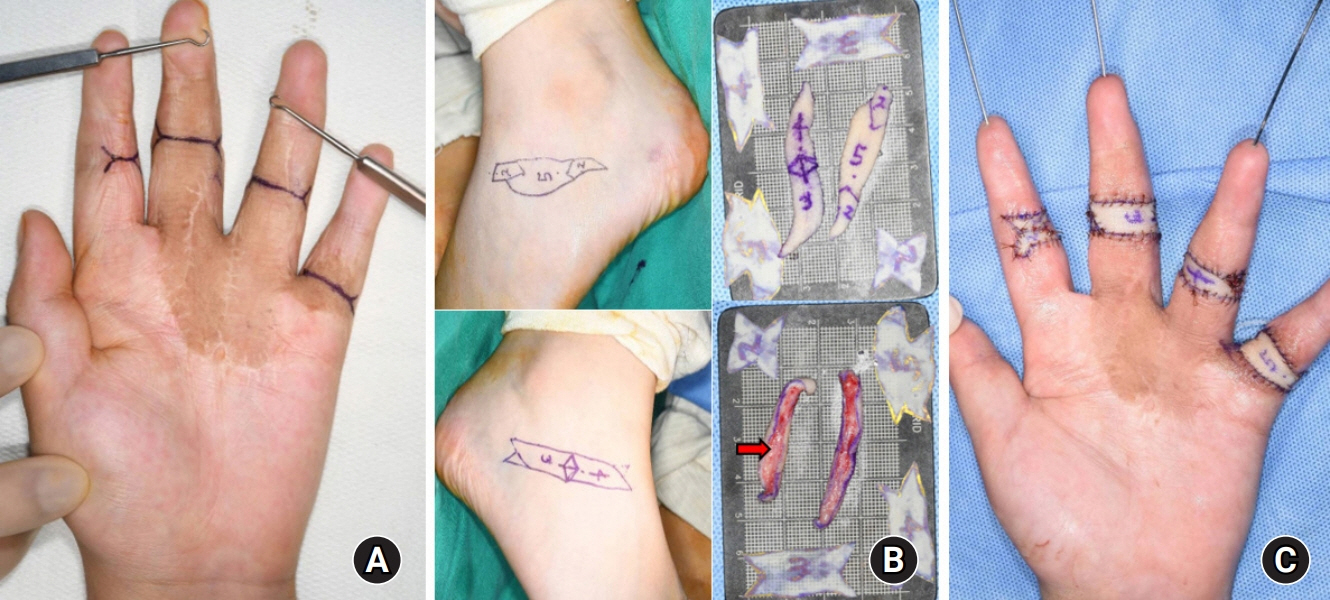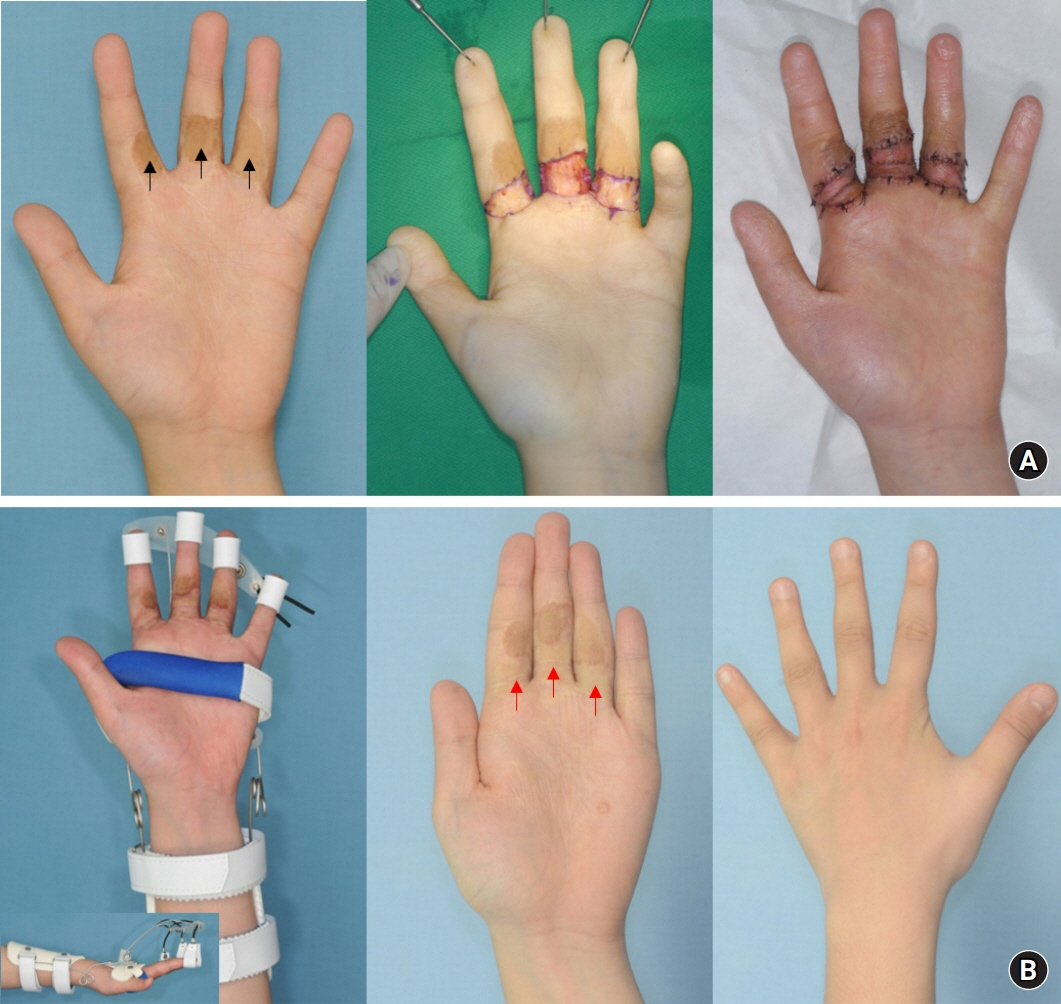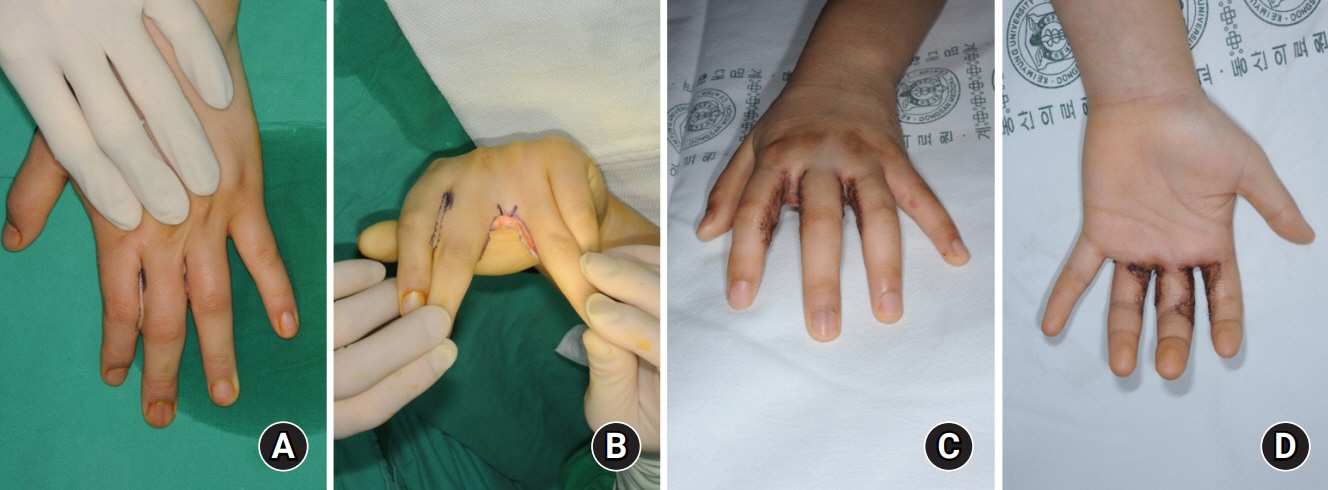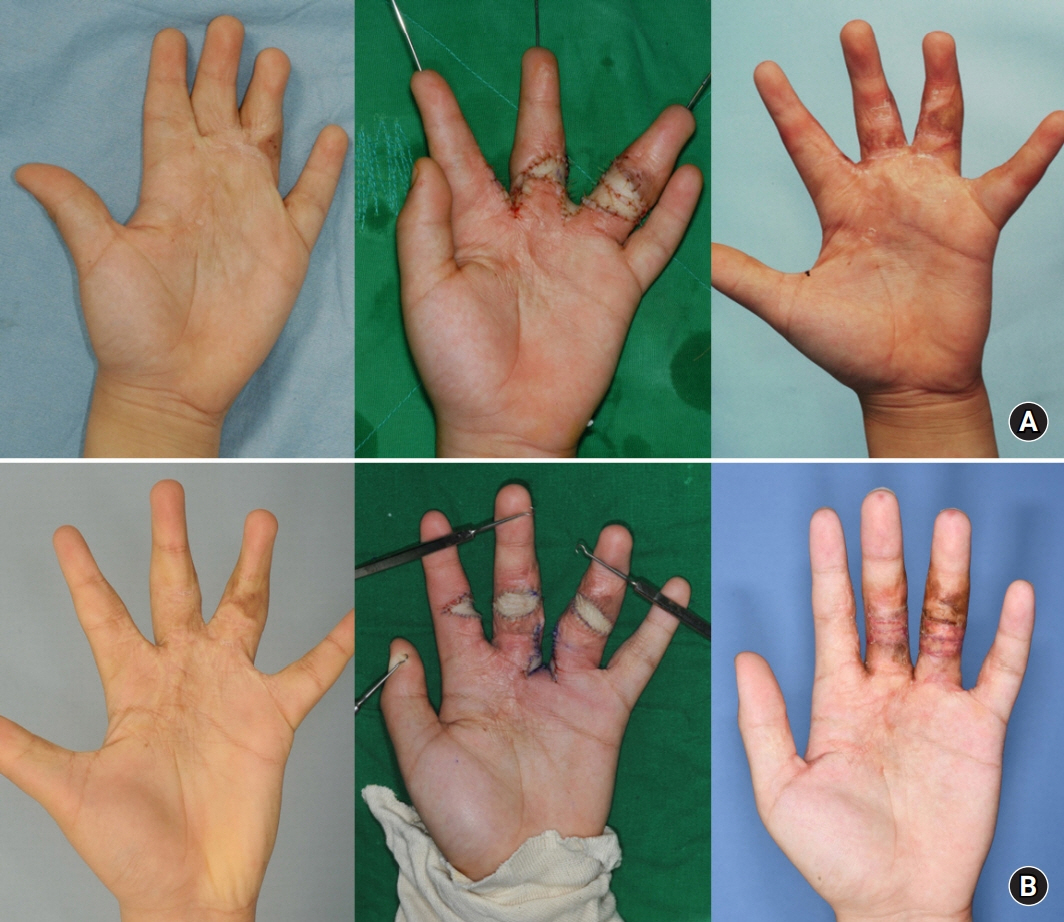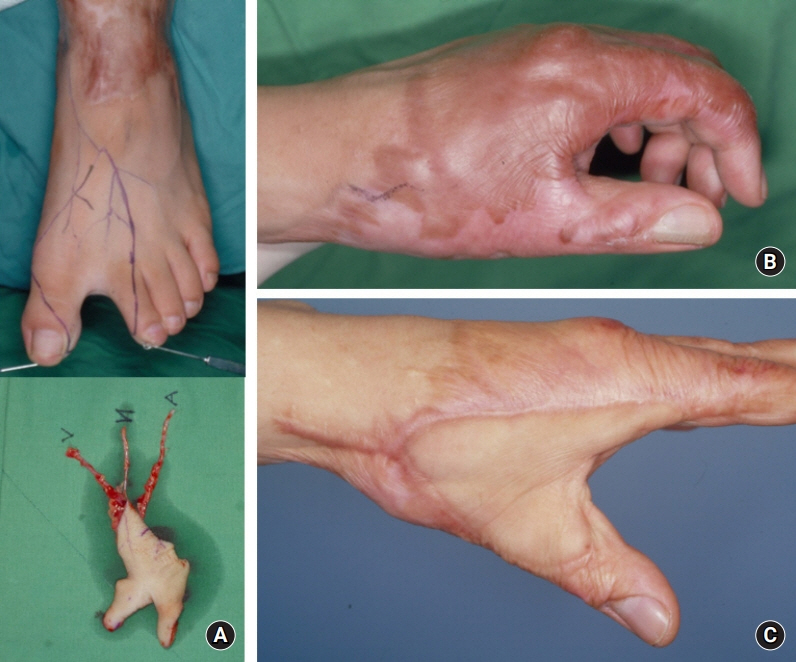Arch Hand Microsurg.
2022 Mar;27(1):12-22. 10.12790/ahm.21.0131.
Correction of hand deformities after burns
- Affiliations
-
- 1Department of Plastic and Reconstructive Surgery, Institute for Medical Science, Keimyung University School of Medicine, Daegu, Korea
- KMID: 2526644
- DOI: http://doi.org/10.12790/ahm.21.0131
Abstract
- Hand burns can lead to deformities even after successful primary healing. They are the most common cause of skin contracture involving the hand. This review article discusses ways to correct claw deformity, flexion contracture in the palm and finger, and web space contracture, which are post-burn hand deformities commonly encountered in clinical practice. Loss of skin is the end result in many cases of hand deformities after burns. Therefore, reinforcing the lost skin is the principle of corrective surgery. Even if the skin is thicker than the full-thickness skin, it will engraft if damage to the tissue and blood vessels of the recipient is minimized. The thicker the skin, the less re-contraction and growth occur. The foot is an ideal donor site for skin grafts on the hand. In particular, the instep or the area below the malleolar is a very good donor site. The first web space of the hand is very important for hand function, and it must be reconstructed with Z-plasty, a skin graft, and a free flap step by step according to the degree of contraction.
Keyword
Figure
Reference
-
References
1. Whitson TC, Allen BD. Management of the burned hand. J Trauma. 1971; 11:606–14.
Article2. McKee DM. Acute management of burn injuries to the hand and upper extremity. J Hand Surg Am. 2010; 35:1542–4.
Article3. McCauley RL. Reconstruction of the pediatric burned hand. Hand Clin. 2000; 16:249–59.
Article4. Donalon MB. Reconstruction of the burned hand and upper extremity. In : May JW, Littler JW, editors. The hand. Philadelphia: W.B. Sanders;1990. p. 5452–82.5. Cauley RP, Helliwell LA, Donelan MB, Eberlin KR. Reconstruction of the adult and pediatric burned hand. Hand Clin. 2017; 33:333–45.
Article6. De la Garza M, Sauerbier M, Günter G, et al. Microsurgical reconstruction of the burned hand and upper extremity. Hand Clin. 2017; 33:347–61.
Article7. Kurtzman LC, Stern PJ. Upper extremity burn contractures. Hand Clin. 1990; 6:261–79.
Article8. Son D, Jeong H, Choi T, Kim J, Han K. A new mechanism associated with compositae graft success. J Plast Reconstr Aesthet Surg. 2010; 63:1900–9.
Article9. Son D, Jeong H, Choi T, Kim J, Han K. Preserved superficial fat skin composite graft for correction of burn scar contracture of hand. J Korean Soc Plast Reconstr Surg. 2008; 35:716–22.10. Won DC, Son DG, Han KH, Park KK. Accelerated healing of composite graft in a wet environment: a pig model. J Korean Soc Plast Reconstr Surg. 2003; 30:801–8.11. Son D, Han K, Chang DW. Extending the limits of fingertip composite grafting with moist-exposed dressing. Int Wound J. 2005; 2:315–21.
Article12. Son D, Park S, Kim H. Medial side of the foot as a skin graft donor site for correction of burn scar contracture of the hand. J Korean Soc Surg Hand. 2005; 10:136–41.13. Roh TS, Kim YS, Burm JS, Chung CH, Kim JB, Oh SJ. Rice cooker steam hand burn in the pediatric patient. Plast Reconstr Surg. 2000; 106:76–80.
Article14. Kreymerman PA, Andres LA, Lucas HD, Silverman AL, Smith AA. Reconstruction of the burned hand. Plast Reconstr Surg. 2011; 127:752–9.
Article15. Gulgonen A, Ozer K. The correction of postburn contractures of the second through fourth web spaces. J Hand Surg Am. 2007; 32:556–64.
Article16. Iwuagwu FC, Wilson D, Bailie F. The use of skin grafts in postburn contracture release: a 10-year review. Plast Reconstr Surg. 1999; 103:1198–204.
Article17. Greyson MA, Wilkens SC, Sood RF, Winograd JM, Eberlin KR, Donelan MB. Five essential principles for first web space reconstruction in the burned hand. Plast Reconstr Surg. 2020; 146:578e–587e.
Article18. Choi TH, Son DG, Han K. Classification and reconstructive strategies of first web space contracture. J Korean Soc Plast Reconstr Surg. 2001; 28:522–30.
- Full Text Links
- Actions
-
Cited
- CITED
-
- Close
- Share
- Similar articles
-
- Analysis and Treatment of Postburn Hand Deformities Durn to Burn Scar Contracures in Children
- Optimizing Outcomes in the Reconstruction of Postburn Scar Hand Deformities
- The Management of Pediatric Steam Burn Caused by Electric Rice-cooker
- Clinical observation on pediatric hand burns
- Reconstruction of Severe Burn Scar Deformities on the Distal Nose and Philtrum




